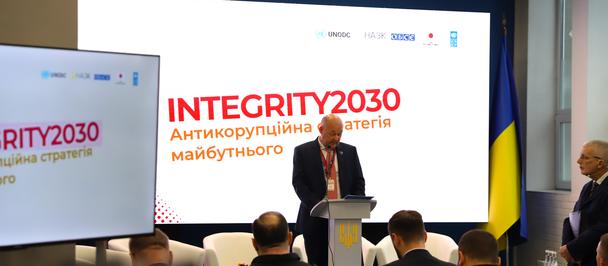Over 200 participants – from Ukrainian manufacturers to international partners – field-tested humanitarian demining technologies in realistic conditions during demining exhibition.
Innovative Ukrainian mine-clearing technologies field-tested with UNDP support
June 26, 2025

Lviv Oblast, 26 June 2025 — The United Nations Development Programme (UNDP) in Ukraine, with financial support from the Government of Luxembourg, has supported a large-scale exhibition titled “The Future of Demining: Ukraine in Action”, which brought together key stakeholders from the humanitarian mine action sector – from Ukrainian manufacturers and innovators, to international partners and government officials.
The two-day event took place at the Demining Training and Testing Facility in Lviv Oblast and involved over 200 participants who, during the event, field-tested 12 pieces of equipment, including ground drones, remote explosive disposal tools, and advanced survey technologies designed for mine-contaminated areas.
The exhibition was a unique platform for assessing innovative technologies in realistic field conditions. The equipment was tested on obstacle courses with mock explosive devices, simulated detonations, and other scenario-based challenges typical of real-world contamination.
Edward Crowther, Field Operations Advisor at UNDP Mine Action Programme, emphasized the importance of such demonstrations in scaling up national demining capabilities:
“We’re witnessing how Ukraine is advancing innovation and domestic production to address the complex challenges posed by explosive contamination,” Crowther said. “This exhibition is more than a showcase – it demonstrates how partnership, trust, and support for Ukrainian developers can drive real, lasting change.”
Twenty Ukrainian companies from across the country presented their solutions, including multi-purpose ground platforms, mine detectors, non-detonation neutralization systems, and armoured land drones. All of the machines were tested across different soil types to evaluate their functionality and adaptability in diverse operating environments.
Ihor Bezkrovainyi, Deputy Minister of Economy of Ukraine, stressed the importance of cross-sector coordination in strengthening the country’s demining industry:
“We’re all parts of the same puzzle that makes up Ukraine’s humanitarian mine action ecosystem,” Bezkrovainyi said. “Developers, innovators, farmers, government officials, and operators – we’re united by one goal: making Ukrainian land safe. The technologies presented here today could become a global benchmark.”
Colonel Ruslan Berehulia, Head of the Main Department for Mine Action, Civil Protection, and Environmental Safety at the Ministry of Defence of Ukraine, added that the equipment was tested in conditions closely simulating real-life minefields:
“We created near-real conditions for testing equipment used in humanitarian demining,” Berehulia said. “During the trial runs, mock explosive devices were deployed, simulated detonations were triggered, and other realistic threats were introduced to evaluate how effectively the equipment performs in the field.”
The event was organized by the Ministry of Economy of Ukraine in cooperation with the Ministry of Defence and the Humanitarian Demining Centre, with support from UNDP in Ukraine and funding from the Government of Luxembourg.
Background:
Since the start of Russia’s full-scale invasion, Ukraine has become one of the most mine-contaminated countries in the world, with over 138,000 square kilometres of land potentially affected by landmines and explosive remnants of war. In response, UNDP – in collaboration with the Ministry of Economy and international partners – is implementing a comprehensive, technology-driven approach to humanitarian mine action. This includes piloting innovative tools, strengthening technical survey capacity, and enhancing national coordination.
Media enquiries:
Yuliia Samus, Head of Communications, UNDP Ukraine, email: yuliia.samus@undp.org

 Locations
Locations



